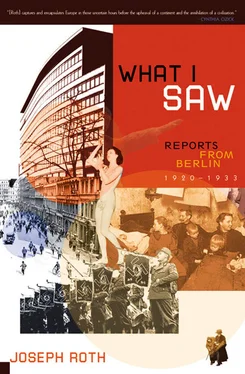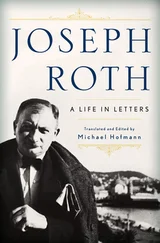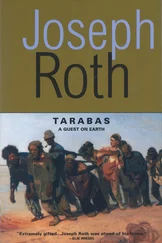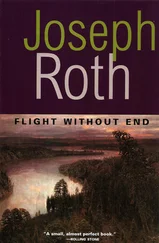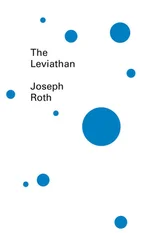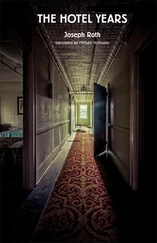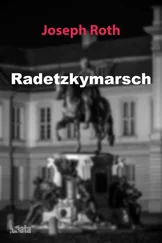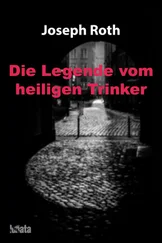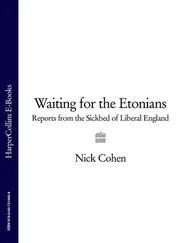But now, at lunchtime, two or three hundred Berliners stand around the Victory Column, sniffing what’s left of an averted calamity, and politicizing.
I know for a fact that the gentleman in the cape and the broad-brimmed hat, who looks like a giant mushroom that’s sprouted somewhere in the shadiest depths of the Tiergarten, is a private scholar, working on such matters as the crystallization of quartz. For a quarter of a century, he’s had the habit of taking his daily walk on a particular avenue, back and forth, with the regularity of a brass pendulum, and then home again. But today, see! He only walked once up the avenue, and then made straight for the Victory Column. And here he is, listening with interest to the disquisition of a little fellow who’s standing hat in hand and mopping his bald head with a blue-bordered handkerchief, about picric acid.
I don’t know whether picric acid comes into quartz crystallography or not. But the interest taken in it by the quartz expert seems positively boundless.
“Dynamite”—I hear—“is dangerous stuff. You use dynamite to blast tunnels. It’s even more dangerous on account of it’s kept in cardboard boxes.”
“What amazes me is that no one smelled the fuse right away!” observes a lady. “When I’m at home, I can tell if anything’s burning.” The lady sniffs as though some trace of the fuse might still be lingering in the air. All the other women sniff along with her, and duly agree: “Ooh, yes!”
“What’s with this picnic stuff anyway?” a nearby colossus asks me. A pink tinge suffuses his face, as though he were just gazing into an Alpine sunset. His picnic has cheered him up as if it were some mass entertainment.
A nationalist says it must have been a communist. A communist pops up and says that he suspects the nationalists. An argument breaks out, and the whiff of a party-political wrangle stinks up to high heaven.
Meanwhile the Victory Column soars blithely and insouciantly straight up into the air, and is pleased to have been put off-limits to visitors.
And I firmly believe: If I could go up the Victory Column now, I would hear the Almighty laughing at the folly and wickedness of this world, which lives by political parties and dies by picric acid.
Neue Berliner-Zeitung—12-Uhr-Blatt, March 15, 1921
30. A Visit to the Rathenau Museum (1924)
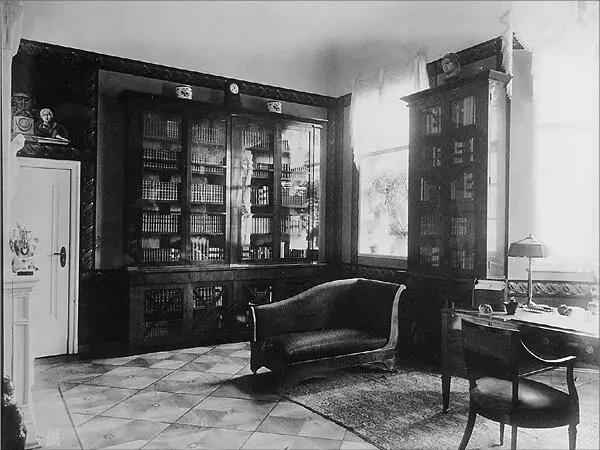
I’m sorry to say that the Rathenau* Museum is not open to the general public. To inspect the house on Königsallee, you will need a pass from the Keeper of Paintings. Foreign visitors on the whole don’t want to put themselves to the trouble of calling on government premises in Berlin, even though I have to say that the Office of the Keeper of Paintings in the Interior Ministry is more of a humane institution than an official one, an oasis, in fact, of humanity in a desert of bureaucracy. A “Rathenau Society” is “in the process of formation”—in other words: Such a thing will one day come about. Once it exists it may be possible to visit Rathenau’s house without the necessity for a prior detour to the ministry. For the most part it is foreigners who want to see where the man — who died so terribly — lived.
He lived wonderfully. Among great books and rare objects, amid beautiful paintings and colors, with useless, sublime, tiny, fragile, impressive, tenderness-eliciting, powerful, dreamy things; surrounded by evidence of the human past, of human wisdom, human beauty, human strength, and human suffering: by the breath of the eternal human. That is what makes outlandish things seem familiar and foreign things at home here. Even the downright “exotic” doesn’t dazzle, doesn’t overpower, confuse, or startle. Its surprise is gently administered. Distancing things extend an invitation. Intimate things are discreet. A loving hand has instinctively created order here. Following hidden inner laws, a prophetic eye has searched. A brilliantly imaginative pedantry has had its way here, classifying and bringing together. Everything here — the books, the cabinets, the tables — is lovingly and indulgently allowed the secret rhythm of its natural being.
The house is an organic whole, wisely divided into above and below: the upstairs with bedroom and bathroom, guest room, and small private study and the more professional, more official downstairs, where there is also the main study, the desk of the man in public life (the one upstairs is that of the private citizen and writer — I almost said: poet). Everywhere there are the books, the symbols of this life: Tieck, Ariosto, Kant, Chesterfield, Plutarch, Goethe. The list could be extended indefinitely. There is almost no name in the great and unending history of literature that is not represented here. Among significant modern and contemporary authors, very few are missing. Two bookcases are filled with volumes that were sent to Rathenau with respectful, humble, polite, fervent requests and dedications. So rich and unstinting was his contact with the creative and productive brains of the epoch that a stream of intellectual labor made its way into his house, as if following a natural law.
Again and again, one runs into the book of books, the Bible. Old Bibles of inestimable bibliophilic value, showpieces of the collection. Small, handy editions of the New Testament in places that bespeak their fond and frequent use: on the desk and by the bed. There is a New Testament with the Greek text and Luther’s translation. Rathenau compared the translation with the original, noted points of difference, sprinkled astonished and quietly plangent question marks in the margin. Discrepancies are shot down with discreet little arrows, the texts are treated roughly as a military strategist would treat his field of operations on a General Staff map. He campaigned with thoughts, put errors to flight, surrounded them, conquered new worlds and distant works, allied himself with lasting powers. He was like a peaceful commander of the intellect; with love for the little beauties of daily life, the ornamental culture of domesticity. Upstairs, on his own, his very own personal walls, he hung pictures that he’d painted himself, the works of a writer who liked to dabble in other arts. He never visited a foreign city without going to its antique shops. He sorted the grain from the chaff. His servant tells stories of how he once gazed at an old chest of drawers, and, in a sudden inspiration, instructed him to remove the metal adornments on the locks. “They don’t belong!” They were taken off, and under the metal there were facings of ivory. So visionary was his eye.
And yet it couldn’t see his end approaching. On his desk upstairs I saw a book called: German Youth and the Needs of the Hour. Oh, he always overestimated that section of German youth whose victim he was to be. In one room, on one table, in peaceful and significant proximity I found the wise old Shulchan Aruch, the religious rule book of Diaspora Orthodoxy, and the old Weissenfelsische Songbook. * Pervading the house and the being of this man was the spirit of conciliation. His life is characterized by its attempt to bring together antiquity, Judaism, and early Christianity. A strong chord of conciliation is sounded in the books he read and those he wrote. It was the effort to bring the various instruments of different cultural worlds within the ambit of a single orchestra. By day he read and studied the New Testament. It lay beside his bed to fill him with its love. He was a Christian; you won’t find a better one.
He made a simple man, released him from the ignorance and want that people fall into through poverty and bad background. How many great writers could make the same claim?
Читать дальше
